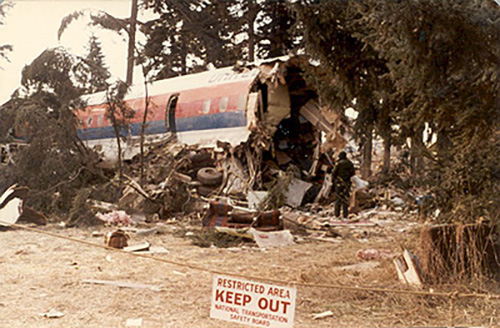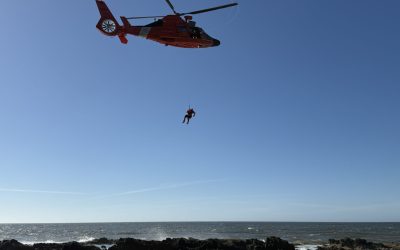As we mark 46 years since the crash, the lessons learned continue to shape aviation, ensuring that the mistakes of the past are not repeated.
December 28, 1978, began as a typical day for passengers aboard United Airlines Flight 173, traveling from New York to Portland with a stopover in Denver. But as the plane approached its destination that evening, the ordinary turned catastrophic. The McDonnell Douglas DC-8-61 they were flying on ran out of fuel while circling near the airport, ultimately crashing into a suburban Portland neighborhood near NE 157th Avenue and East Burnside Street. The crash claimed the lives of 10 people and left 60 others injured. This incident sparked a major overhaul in aviation safety, saving countless lives in the years to come.
What Happened Aboard Flight 173

via airdisaster.com (the waybackmachine).
Flight 173 had been in the air for just over two hours when the crew detected an issue with the landing gear. A vibration and lack of an indicator light suggested a potential problem. Opting for caution, the captain requested a holding pattern over Portland to troubleshoot the issue and prepare for a possible emergency landing.

via airdisaster.com (the waybackmachine).
While the crew concentrated on diagnosing the landing gear problem, time and fuel slipped away. The plane circled for nearly an hour, burning fuel at an accelerated rate because the gear remained down, increasing drag. Meanwhile, the crew’s focus on the landing gear diverted attention from critical fuel calculations.
As the engines began flaming out one by one, the situation turned dire. The captain issued a mayday call, but it was too late. At 6:15 p.m., Flight 173 crashed into a residential area, clipping trees and narrowly missing an apartment building before tearing through homes and backyards.
Survival And Loss

via airdisaster.com (the waybackmachine).
Among the survivors was 17-year-old Aimee Conner, who was returning by plane from her grandparents’ anniversary party. Sitting over the wing, she recalled the terrifying moment the plane hit trees and the ground. Despite injuries, she managed to escape through a hole left by the snapped-off wing.

via airdisaster.com (the waybackmachine).
Lynn Egli, another survivor, described the chaos in the cabin as passengers were told to brace for impact. Children and infants were repositioned for safety, and passengers were instructed to remove jewelry and glasses. Egli, seated in row 13, miraculously walked away from the wreckage.
Tragically, others were not as fortunate. Of the 10 fatalities, four were members of the same family. Lead flight attendant Joan Wheeler and flight engineer Forrest Mendenhall also lost their lives in the crash.
A Turning Point In Aviation

via airdisaster.com (the waybackmachine).
The National Transportation Safety Board (NTSB) investigation revealed that the captain, a seasoned pilot with decades of experience, became so preoccupied with the landing gear issue that he failed to monitor the fuel situation. Although the first officer and flight engineer were aware of the fuel problem, they did not effectively communicate its severity.

via airdisaster.com (the waybackmachine).
The crash highlighted a need for better communication and decision-making in the cockpit. This realization led to the creation of Crew Resource Management (CRM), a training program emphasizing teamwork, assertive communication, and situational awareness. United Airlines Flight 173 became a case study for CRM, revolutionizing aviation safety protocols worldwide.
Remembering The Lives Lost
Today, a memorial stands in the neighborhood where Flight 173 crashed, honoring the lives lost and the resilience of survivors. While the tragedy is a somber chapter in Portland's history, it also represents a turning point in making air travel safer for everyone.
For survivors like Conner and Egli, the crash remains a defining moment, instilling a renewed appreciation for life and a determination to give back. Whether working as a hospice nurse or simply cherishing loved ones, they carry the weight of that day as a reminder of life’s fragility and purpose.













